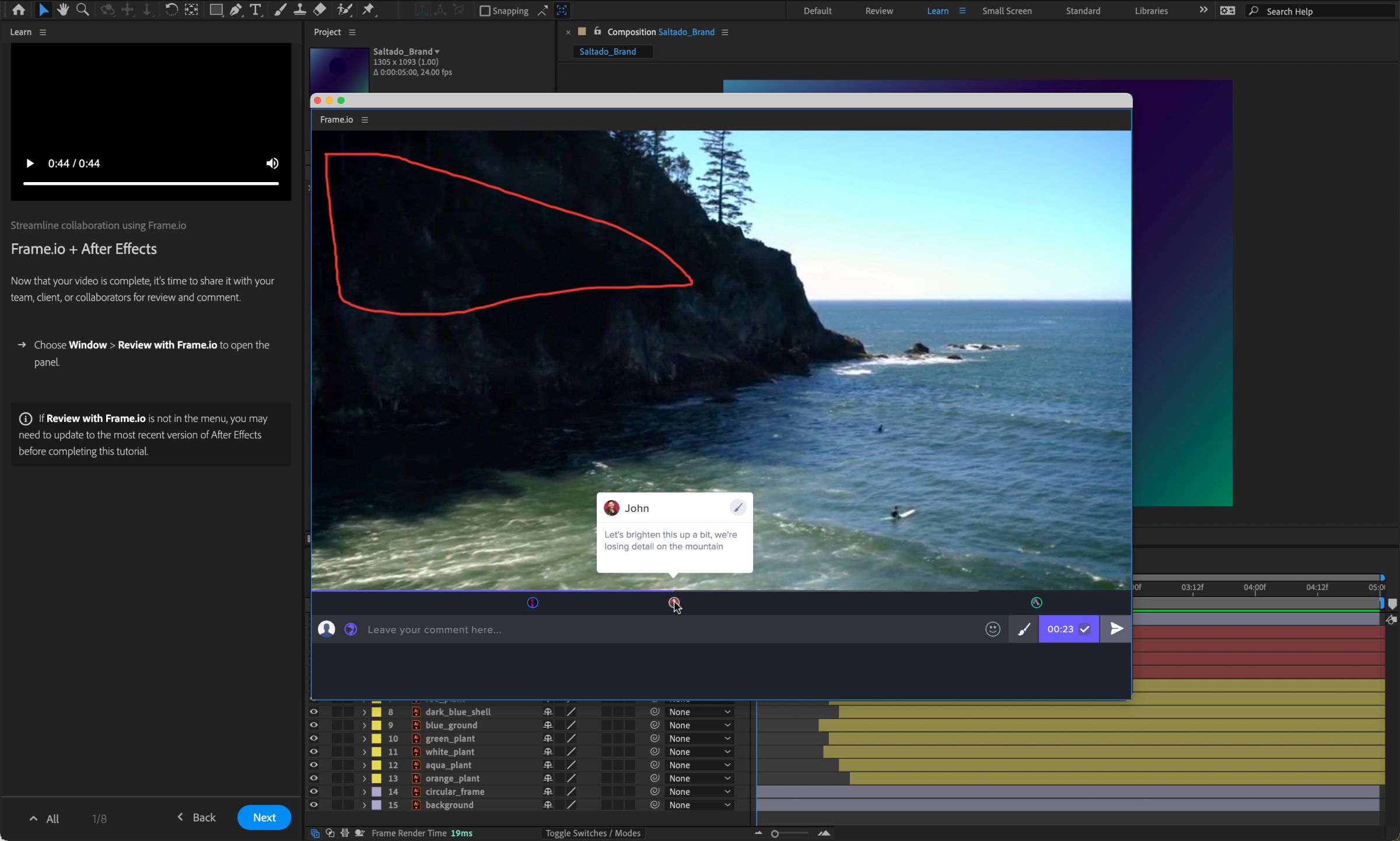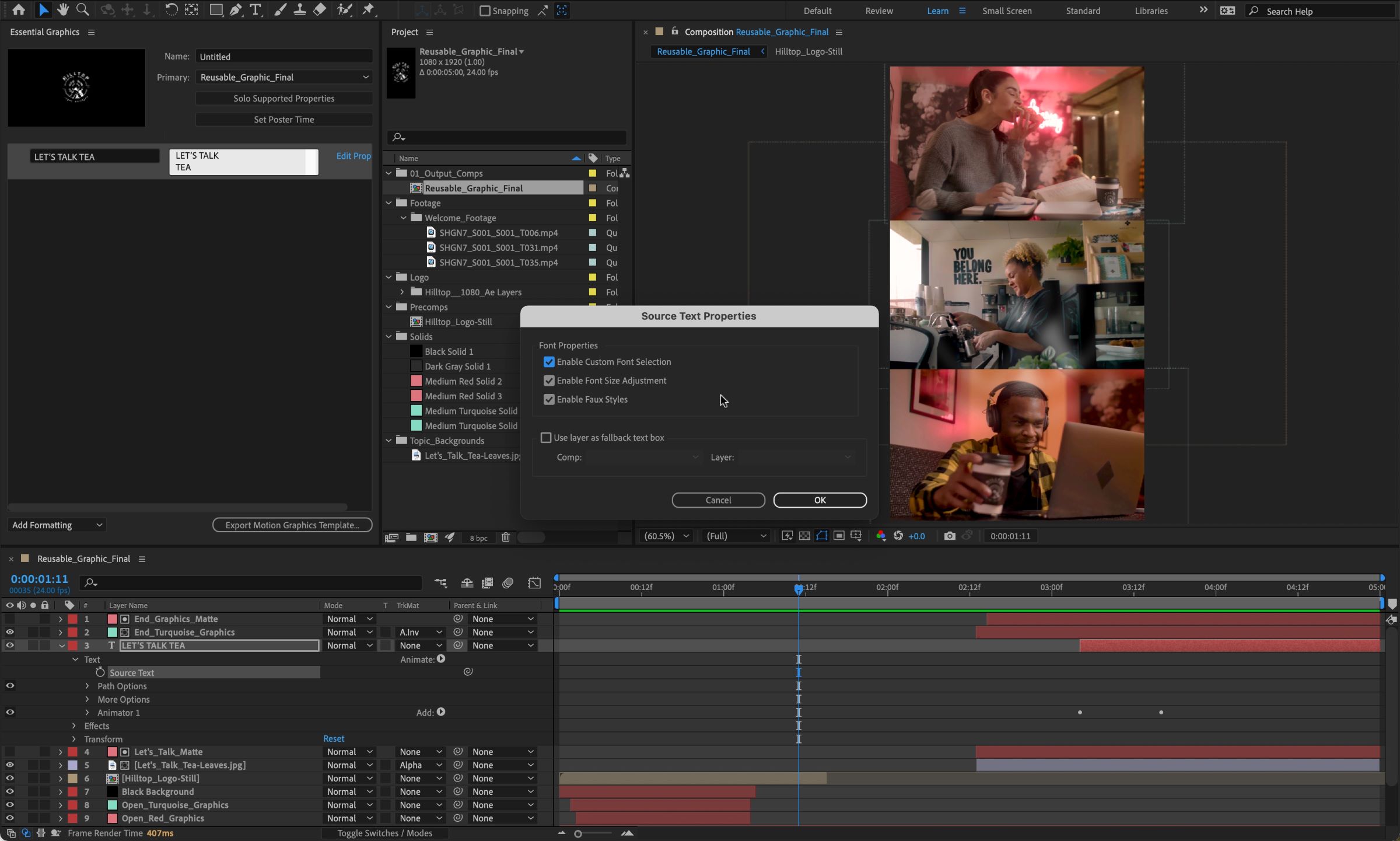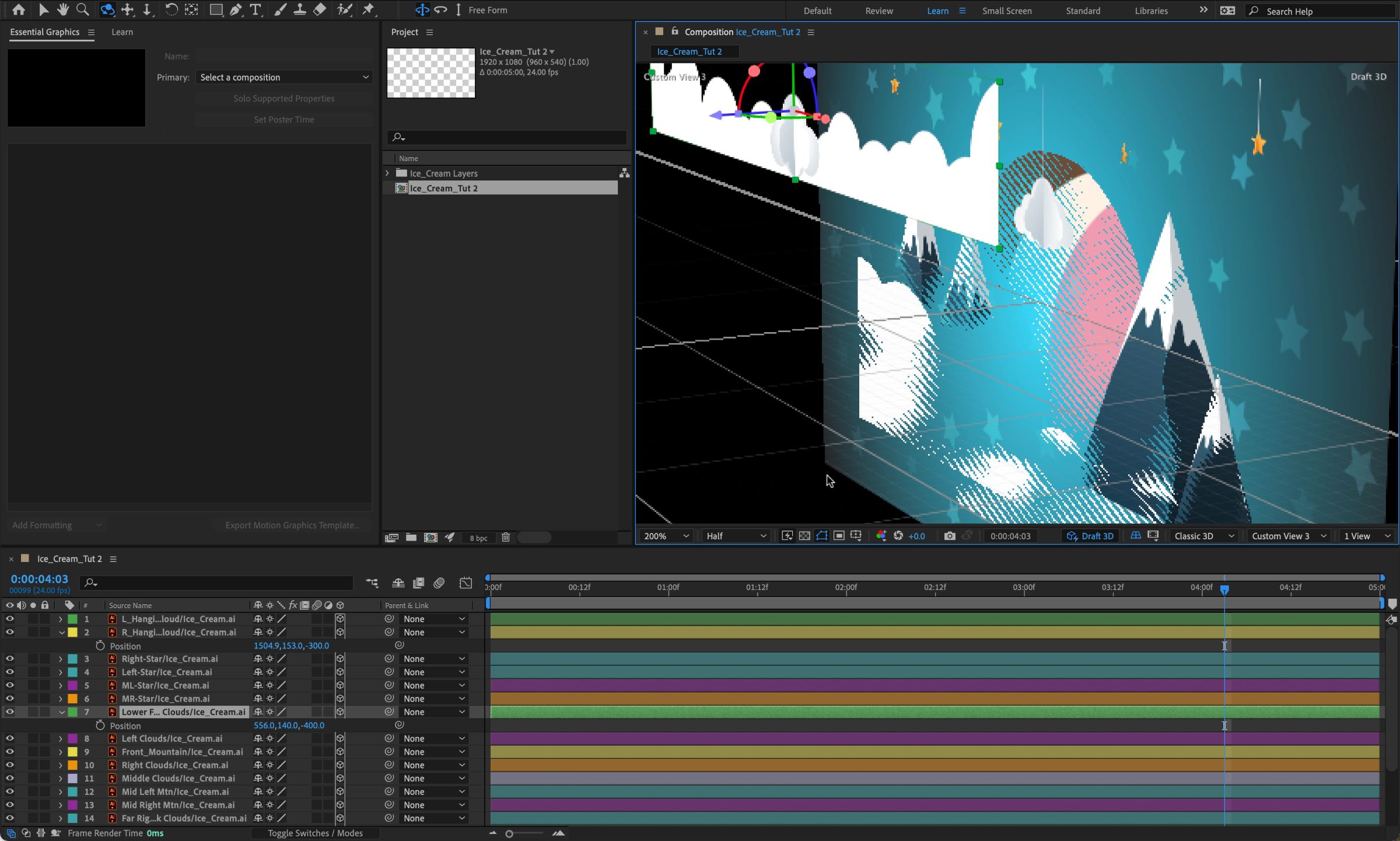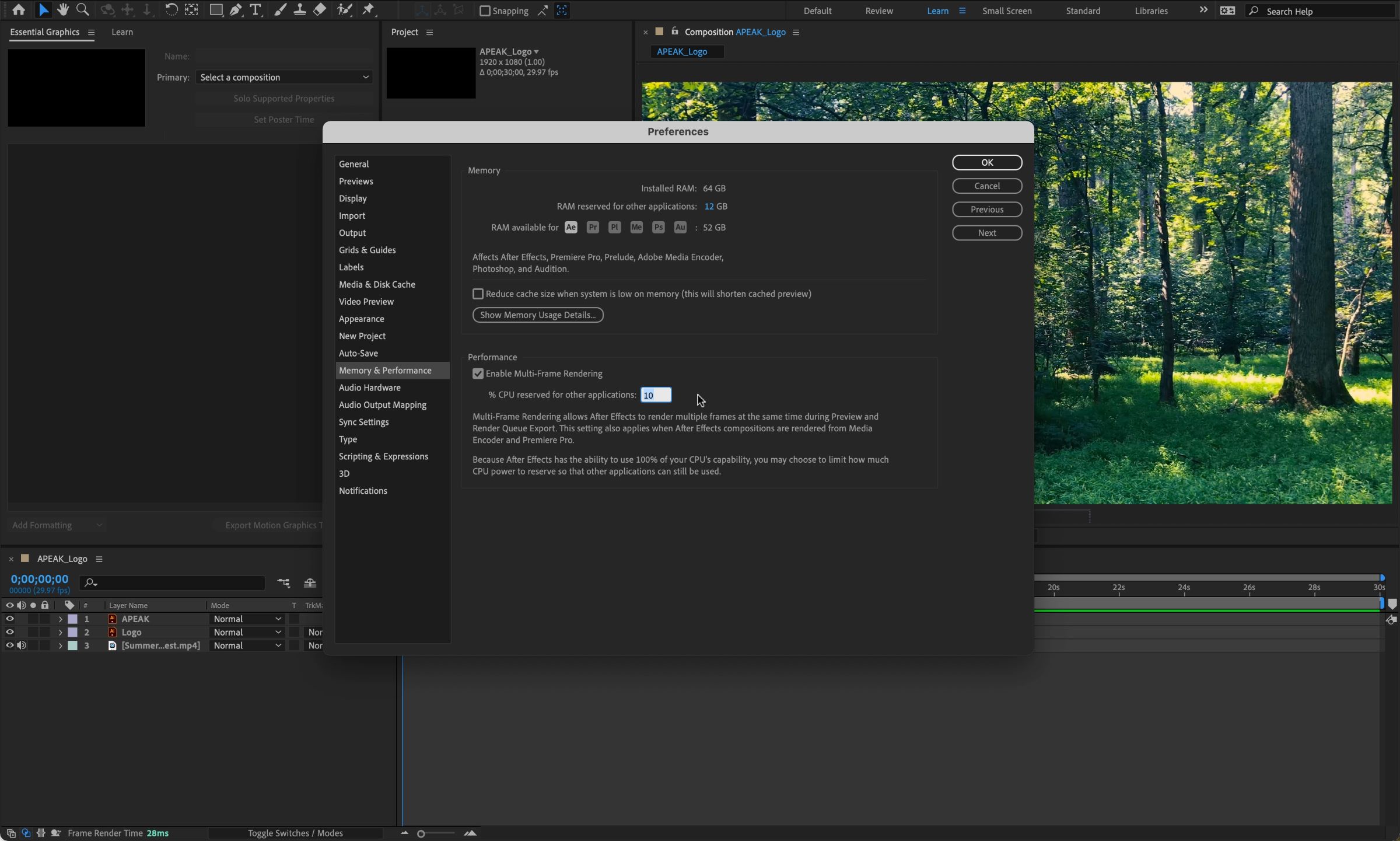TechRadar Verdict
Adobe’s After Effects is a visual effects powerhouse, offering so much versatility and options, for the budding and professional video designer. It can be an overwhelming VFX app, but there’s really very little you can’t do with it. The new additions make it an even more versatile tool.
Pros
- +
Multiplatform (Windows and Mac)
- +
Great new tools
- +
Welcomed under the hood improvements
Cons
- -
Sheer number of features can be intimidating
- -
Subscription-only
- -
Need a powerful computer to take full advantage of it
Why you can trust TechRadar
Looking for the latest version? Check out our 2024 Adobe After Effects review
Adobe After Effects is the grade-A, pro-level, industry-standard for visual effects software. Used by countless professional editors, artists, and compositors to bring stellar VFX to the screen.
It's not hard to see why it's one of the best VFX software tools on the market: After Effects is a feature-rich, intuitive special effects powerhouse.
When we last reviewed Adobe’s video effects tool, the focus for improvement was on performance and time-saving features - something it delivered with aplomb.
A lot of new tools have been added over the last two years, and we’ll be taking a look at some of the ones that impressed us the most through the course of this review.
Explore our round-up of the best Adobe After Effects alternatives
Apple silicon
Mac users will be delighted to find that, just like Adobe’s Premiere Pro, After Effects 2022 (version 22.3), offers native support for Apple’s new M1 family of processors.
It’s extremely reassuring for those who prefer the Mac platform, that their software of choice is migrating to the new architecture. Users will experience shorter launch times, improved UI responsiveness, and faster rendering, thanks to this support.
Frame.io
Perhaps one of the biggest improvements to After Effects (and Premiere Pro), is the inclusion of Frame.io. You need to be logged into your Creative Cloud account in order to take advantage of these features, and Frame.io includes 100GB of storage in addition to your usual Creative Cloud allowance.
You’re able to share up to 5 projects with 2 users and an unlimited number of reviewers. It can be accessed from a web browser, or directly within After Effects.
There’s an enhanced version of this service (which you can try free for 30 days), called the Frame.io Team Plan, which includes additional storage, and the ability to share an unlimited number of projects with up to 15 users.
As you can tell by what’s on offer, this service allows you to share projects and get real-time timecode-accurate feedback on the work in progress. This is an ideal and extremely useful tool when discussing work with colleagues and clients, and controlling exactly what and where changes should be made on a collaborative project.

Media swapping
Media replacement is another impressive new feature. The way it works is really simple: use After Effects to create a template, just as you would normally. Once done, drag various elements to the Essential Graphics panel, select their editable properties, export it, and you’re pretty much done.
Do note however, that not all properties of an item can be manipulated and altered from Premiere Pro, but the list is large enough to satisfy most, if not all, needs.
Objects such as text, images and video clips, can be made swappable turning your templates into highly useful and versatile tools, with as numerous editing options as are required. Creating various versions (depending on your needs) is also possible, further increasing your possibilities.
This is a great way to get a designer to create a template, while allowing a Premiere Pro editor the flexibility they need to make alterations without having to contact said designer for every needed change. It’s the sort of emphasis on efficient workflows that’s bound to increase post-production productivity.

Working in 3D
Creating 3D modelling software designs can be tricky, especially when it’s all done via a 2D interface, so Adobe’s designers have worked to help ease this process.
One of the recent improvements is the inclusion of an optional 3D Ground Plane. With it activated, you’ll get a horizontal plane vanishing to infinity which can be used as a frame of reference when creating your scene.
This is something that can be quickly toggled on or off so it never gets in the way, and is only there when you need it. The more complex a creation, the easier it is to get lost in it, so this is a most welcome addition to help you find your bearings.
Another great new feature is Draft Preview. Prior to it, you could access a ‘fast draft’ by drilling down a bunch of menus. Now, it’s a button located in the toolbar. Toggling it is highly useful if you have an older computer, or your project is getting very complex.
Depending on the prowess of the best video editing computer you can boot up, and intricacy of your work, when activated, the quality will likely be reduced. But you’ll be able to manipulate objects more quickly and easily, saving you a lot of time, and going back to full quality is but a click away.

Under the hood enhancements
But it’s not all big tentpole features. After Effects has seen a lot of subtle alterations designed to improve your workflow.
For instance, a lot of work has been done to optimise the visual effects software. After Effects now takes advantage of multiple cores, whether running on a PC or the best video editing laptop, when previewing and rendering, taking over power at the expense of other processes and other running software.
This functionality may not be on by default, but you can find it After Effects’ Preferences. You’ll also notice that you can choose just how much of your computer’s CPUs are reserved for other apps (the default is 10%).
Also, if you work with the HEVC video format, new hardware-accelerated decoding is used to improve playback and editing, especially with 10-bit files, whether you’re working on a Mac or PC.

Flexible languages
One of the great advantages of the Adobe suite is the cross pollination of features from one app to another, and this is perfectly showcased with their new Universal Text Engine.
We raved about this feature in our Premiere Pro review. It allows you to work with multiple languages much more easily, without having to constantly travel to the preferences to switch from one to another.
There’s support for multiple languages, the latest addition being Cantonese, with left-to-right and right-to-left settings being accessible directly from the Essential Graphics panel. You can even apply different scripts inside the same graphic element. How’s that for flexibility?
Final verdict
All this is actually just scratching the surface of what’s been improved since we last took a look at Adobe After Effects.
AE version 22.3 is highly impressive. It builds on strong foundations, offering a wealth of new features designed to make VFX quicker and easier. It’s no wonder After Effects is seen as the go-to video compositor.
And Adobe are far from resting on their laurels, offering new features on a regular basis, making their subscription model an attractive one indeed if you’re a professional designer and editor.
Adobe Premiere Pro vs Adobe After Effects: what’s the difference?
Premiere Pro and After Effects are Adobe’s flagship post-production tools for video editors, designers, and motion graphic artists.
When it comes to similarities and differences between Premiere Pro and After Effects, the biggest is this: Adobe Premiere Pro is our choice for the best video editing software and Adobe After Effects is VFX software.
You can still cut videos and add basic effects with either program. Both deliver the familiar, effortless Adobe user experience that makes their tools accessible to beginners and professionals alike. And we awarded both 5 stars in our reviews for each tool for setting the industry standard and offering genuine powerhouse tools for content creators and creatives in film & TV.
When you compare Premiere Pro and After Effects, it’s not quite accurate to think in terms of a face-off. It’s not really a case of Adobe Premiere Pro vs Adobe After Effects. The two tools are built for different parts of the process, seamlessly working together to deliver an efficient post-production workflow and professional results.
For more help finding the video editor best apps for you, check out our guide to the best alternatives to Adobe Premiere Pro.
Steve has been writing about technology since 2003. Starting with Digital Creative Arts, he's since added his tech expertise at titles such as iCreate, MacFormat, MacWorld, MacLife, and TechRadar. His focus is on the creative arts, like website builders, image manipulation, and filmmaking software, but he hasn’t shied away from more business-oriented software either. He uses many of the apps he writes about in his personal and professional life. Steve loves how computers have enabled everyone to delve into creative possibilities, and is always delighted to share his knowledge, expertise, and experience with readers.
